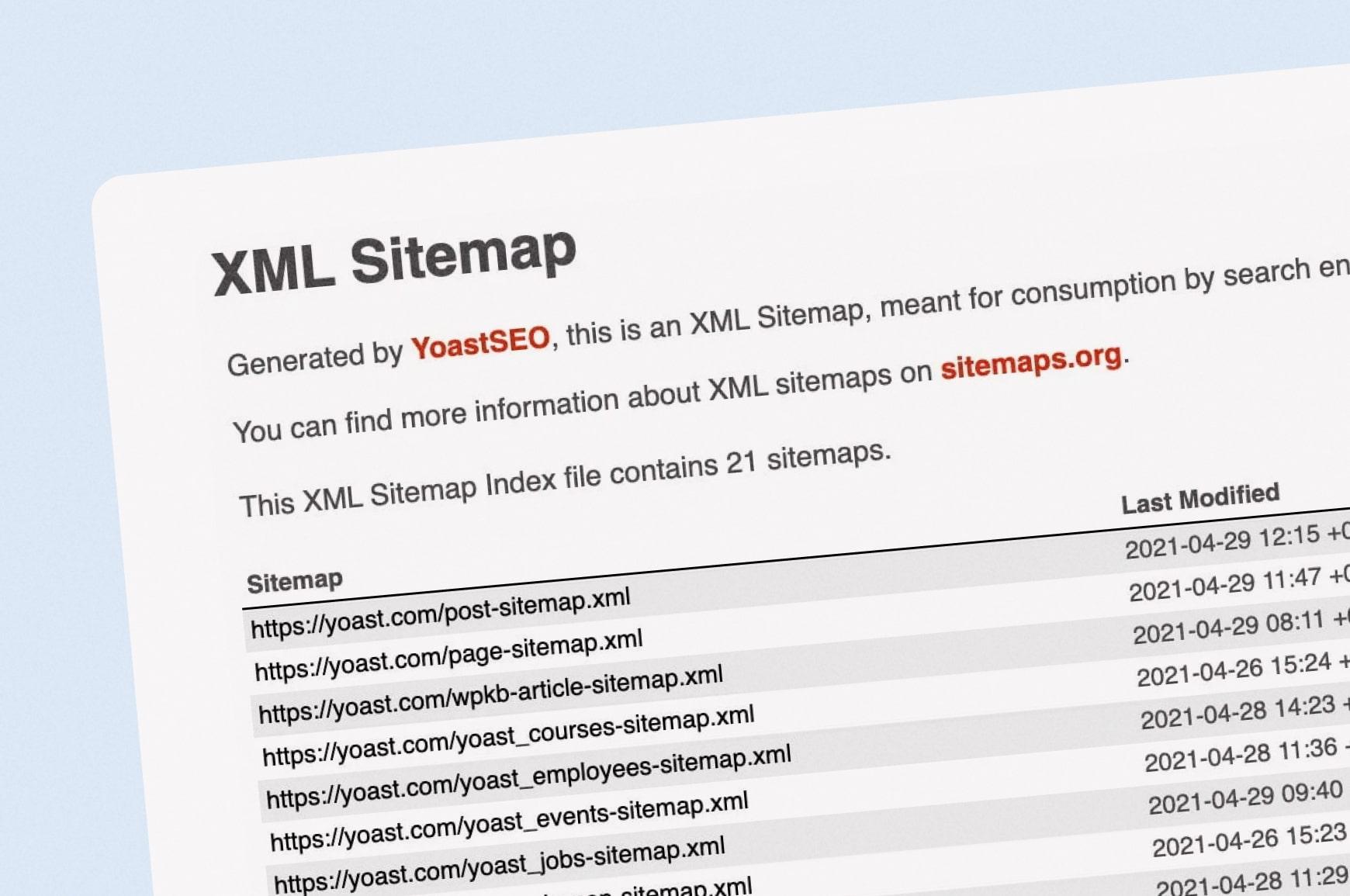
When it comes to optimizing your website for search engines, having a clear roadmap is essential. Think of it as giving Google a detailed guidebook to navigate your content. This is where sitemaps come into play, but with two primary options on the table—HTML sitemaps and XML sitemaps—it can be a bit overwhelming to choose the right one for your needs. Each type serves a distinct purpose and audience, and understanding the differences can make a significant impact on your site’s visibility and user experience. So, which one should you use? Let’s dive into the details and explore how HTML and XML sitemaps stack up against each other, helping you decide the best path for your website’s success.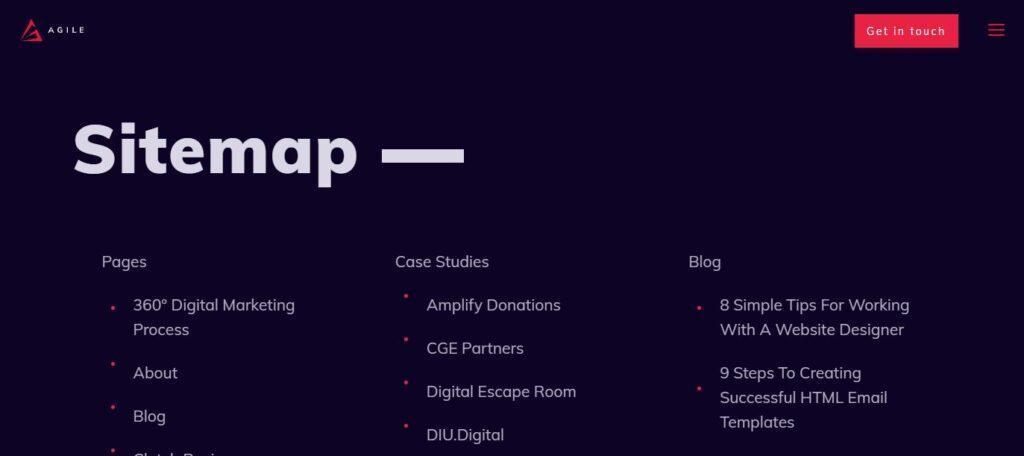
Understanding the Basics of HTML and XML Sitemaps
When diving into the world of sitemaps, it’s essential to understand the two primary types: HTML and XML. Both serve distinct purposes but can significantly enhance your website’s performance and user experience when used correctly.
HTML sitemaps are designed for human visitors. They are simply web pages that list the various pages of your website, making it easier for users to navigate. An HTML sitemap can help visitors find what they are looking for quickly and can improve overall usability. Here are a few key benefits:
- User-friendly navigation: Visitors can see the structure of your site at a glance.
- Improved SEO: Search engines can easily crawl your site, understanding its hierarchy and content.
- Encourages exploration: With a clear layout, users may discover content they otherwise wouldn’t have found.
On the flip side, XML sitemaps are tailored for search engine bots. They provide information about the pages, videos, and other files on your site and the relationships between them. An XML sitemap helps search engines understand the structure of your site, which can be crucial for indexing. Some key points include:
- Enhanced indexing: Ensures search engines find and index all your important pages.
- Priority settings: You can specify the importance of certain pages and how often they are updated.
- Supports multimedia: Can include information about images and videos, benefiting rich content.
When deciding which type of sitemap to use, consider your audience. If your goal is to improve user experience, an HTML sitemap is invaluable. Conversely, if your focus is on optimizing search engine indexing, then an XML sitemap is essential. In fact, many successful websites utilize both types to capitalize on their respective strengths.
Here’s a quick comparison of the two types:
| Feature | HTML Sitemap | XML Sitemap |
|---|---|---|
| Target Audience | Website Visitors | Search Engine Bots |
| Format | Web Page | XML File |
| SEO Benefit | Improves User Navigation | Enhances Indexing |
| Ease of Creation | Can be Manual or Automated | Typically Automated |
both HTML and XML sitemaps serve unique purposes that can greatly influence how your site is perceived by users and search engines alike. Implementing both can provide a comprehensive strategy for optimizing your website’s visibility and usability. Ultimately, the choice between them should align with your specific goals—whether you’re focusing on user engagement or enhancing search engine efficiency.
Why Sitemaps Matter for Your Website’s SEO
When it comes to optimizing your website for search engines, understanding the role of sitemaps is essential. Sitemaps essentially act as a roadmap for search engine crawlers, guiding them to the most important pages of your website. This ensures that your content is indexed efficiently, which can significantly impact your visibility in search results.
Here’s why sitemaps are crucial for SEO:
- Improved Indexing: By providing a clear structure of your website’s content, sitemaps help search engines discover and index your pages more effectively. This is especially beneficial for larger websites with numerous pages.
- Prioritization of Pages: Sitemaps allow you to indicate which pages are most important. This can help search engines understand the hierarchy of your content and prioritize crawling those key pages first.
- Handling Dynamic Content: For websites with frequently changing content, such as blogs or e-commerce sites, sitemaps can be updated automatically to reflect new pages, helping keep search engines informed about the latest content.
- Reduced Crawl Errors: Including a sitemap can minimize crawl errors by providing explicit URLs for search engines to follow, reducing the likelihood of your pages being overlooked.
Moreover, different types of sitemaps serve different purposes. An XML sitemap is primarily designed for search engines, while an HTML sitemap caters more to human visitors. Understanding how each type functions can help you strategically enhance your SEO efforts.
| Feature | XML Sitemap | HTML Sitemap |
|---|---|---|
| Purpose | Search Engine Optimization | User Navigation |
| Format | Machine-readable | Human-readable |
| Visibility | Not visible to users | Visible on-site |
| Updates | Automatically updated | Manually updated |
Ultimately, implementing a sitemap is not just about having a technical asset on your site; it’s about enhancing the user experience and ensuring that your content is accessible. A well-structured sitemap can lead to better indexing, increased traffic, and improved engagement on your website.
The Key Differences Between HTML and XML Sitemaps
When it comes to sitemaps, understanding the distinction between HTML and XML formats is essential for optimizing your website’s visibility and user experience. Each type of sitemap serves a unique purpose and is designed for different audiences—search engines and users, respectively.
HTML sitemaps are designed primarily for human visitors. They offer an accessible way for users to navigate your website, showcasing the structure and organization of your content. Here are some key traits:
- User-friendly: An HTML sitemap presents a clear list of pages, making it easier for visitors to find what they’re looking for.
- Enhanced navigation: By providing links to various sections, these sitemaps improve the overall user experience.
- SEO benefits: While not a direct ranking factor, a well-structured HTML sitemap can reduce bounce rates and increase page views.
On the other hand, XML sitemaps cater to search engines. They are structured data files that help search engine crawlers understand your site’s hierarchy and discover new or updated content more efficiently. Here’s what sets XML sitemaps apart:
- Machine-readable: Designed for search engines, XML sitemaps contain metadata that aids in indexing.
- Prioritization: You can indicate the importance of specific pages with priority values and set frequency of updates, guiding search engines to focus on your most critical content.
- Multi-page support: XML sitemaps can include thousands of URLs, making them suitable for large websites.
| Feature | HTML Sitemap | XML Sitemap |
|---|---|---|
| Purpose | User navigation | Search engine indexing |
| Target Audience | Website visitors | Crawlers & bots |
| Format | Human-readable | Machine-readable |
| SEO Impact | Indirect | Direct |
Choosing between these two types of sitemaps doesn’t have to be a dilemma. In fact, many successful websites utilize both to maximize their SEO potential. By doing so, you not only enhance user experience but also ensure that search engines can efficiently crawl and index your site. With a strategic approach, combining the strengths of both HTML and XML sitemaps can lead to a more robust online presence.
When to Use an HTML Sitemap for User Experience
An HTML sitemap is an invaluable tool that serves as a user-friendly navigation guide for your website. Understanding when to implement one can significantly enhance user experience. Unlike XML sitemaps, which are tailored for search engines, HTML sitemaps focus on providing visitors with an organized layout of your site’s structure, helping them find content quickly and efficiently.
Consider using an HTML sitemap in the following scenarios:
- Your site has a complex structure: If your website features multiple categories and subcategories, an HTML sitemap allows users to grasp the layout at a glance, making it easier to navigate.
- You have a large amount of content: Websites with extensive blog posts, articles, or products can overwhelm users. An HTML sitemap simplifies the search process by listing all the pages, reducing frustration and improving satisfaction.
- You are launching a new website: When introducing a new site, an HTML sitemap can guide users through the available content, ensuring they don’t miss important sections.
- You want to boost SEO indirectly: While HTML sitemaps are primarily for users, they also benefit SEO by increasing the likelihood of visitors spending more time on your site and reducing bounce rates.
Creating an HTML sitemap is a straightforward process. It typically involves listing the main sections of your website and linking to relevant pages. Here’s an example of how you might structure an HTML sitemap:
| Section | Links |
|---|---|
| Home | Home |
| Blog | View Blog |
| Products | Shop Now |
| Contact | Get in Touch |
Another crucial aspect to consider is the placement of your HTML sitemap. Ideally, it should be accessible from the footer or the main navigation menu, ensuring users can find it easily whenever they need assistance. This visibility will enhance user experience and encourage visitors to explore more of your content.
don’t forget to keep your HTML sitemap updated as you add or remove pages from your site. An outdated sitemap can lead to confusion and frustration among your visitors, negating the very purpose of having one. Regular maintenance ensures that your HTML sitemap remains an effective tool for enhancing user experience.

The Benefits of Having an XML Sitemap for Search Engines
When it comes to optimizing your website for search engines, having an XML sitemap can be a game changer. This structured file, written in XML format, serves as a roadmap for search engines, guiding them to all the important pages on your site. But what are the exact benefits of having one?
Enhanced Crawling Efficiency: An XML sitemap makes it easier for search engines to crawl your site. By listing all your URLs, it reduces the chances of pages being overlooked or missed entirely. This is especially beneficial for larger websites with numerous pages or newly created content that might not yet be linked elsewhere.
Prioritization of Content: With an XML sitemap, you can indicate which pages are more important than others. You can even specify the frequency of updates for each page, helping search engines understand the relevance and timeliness of your content. This can lead to better indexing and potentially higher rankings on search results.
Support for Rich Media: XML sitemaps aren’t just limited to standard HTML pages. They can also accommodate rich media content such as videos, images, and news articles. By including this diverse range of content in your sitemap, you increase the likelihood of these assets being indexed and displayed in relevant searches.
Ideal for New Websites: If you’re launching a new site, an XML sitemap is essential. It helps search engines discover your pages quickly, which can lead to faster indexing. Without a sitemap, especially for large sites, it may take longer for search engines to find all your content, causing delays in visibility.
Easy Updates: Keeping your XML sitemap updated is straightforward, especially if you’re using a content management system (CMS) like WordPress. Many plugins automatically generate and update your sitemap whenever you publish new content, ensuring that search engines always have the latest information.
To give you a clearer perspective, here’s a quick comparison of the key benefits of having an XML sitemap versus a traditional HTML sitemap:
| Feature | XML Sitemap | HTML Sitemap |
|---|---|---|
| Crawling Efficiency | High | Moderate |
| Support for Rich Media | Yes | No |
| Automatic Updates | Yes | No |
| User-Friendliness | No | Yes |
integrating an XML sitemap into your website strategy offers numerous advantages that streamline the indexing process and enhance your search engine visibility. By ensuring your content is not only accessible but prioritized, you create a solid foundation for improving your site’s SEO performance.
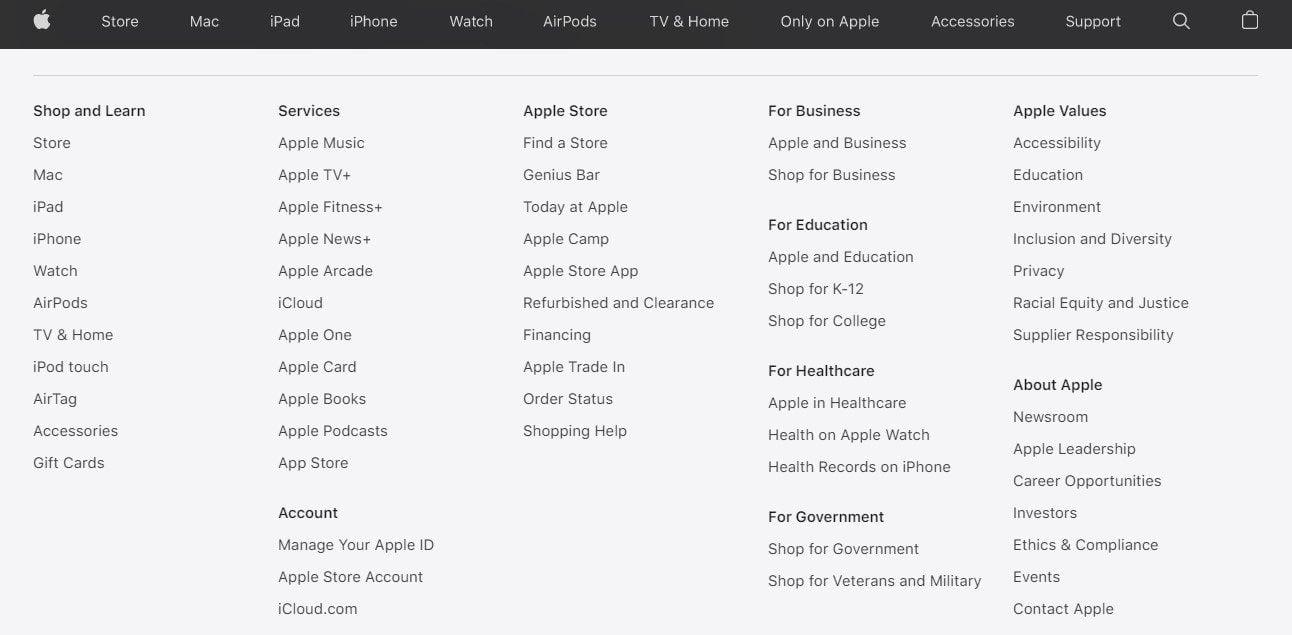
How Search Engines Crawl HTML vs XML Sitemaps
When search engines venture into the digital landscape, they utilize various methods to discover and index content. Among these methods, HTML and XML sitemaps play crucial roles, but they do so in different ways tailored to their unique functions.
HTML sitemaps are essentially user-friendly pages on your website that provide visitors with a structured overview of your site’s content. This is how search engines utilize them:
- They help search engine bots understand the structure of your website.
- They offer a clear path for bots to follow, leading them to various sections and pages.
- HTML sitemaps improve user experience, encouraging visitors to explore more of your content.
Search engines appreciate these elements because they reduce the time and effort required to locate and index pages, which can improve your site’s overall visibility.
On the other hand, XML sitemaps serve a more technical purpose. These files are specifically designed for search engines and contain a list of URLs along with metadata about each page, such as:
- Last modification date
- Frequency of updates
- Priority relative to other pages
The structured format of XML allows search engines to easily parse the data and prioritize the crawling of your pages. For websites with extensive content or complex structures, XML sitemaps can ensure that no page is left unindexed.
Here’s a quick comparison of key features between HTML and XML sitemaps:
| Feature | HTML Sitemap | XML Sitemap |
|---|---|---|
| User-Friendly | ✔️ | ❌ |
| Designed for Search Engines | ❌ | ✔️ |
| Improves User Navigation | ✔️ | ❌ |
| Metadata Support | ❌ | ✔️ |
While both sitemaps are beneficial, the choice between HTML and XML can depend on your goals. If enhancing user experience is your primary target, an HTML sitemap is invaluable. However, if you are looking to optimize for search engines and ensure comprehensive indexing, an XML sitemap should be part of your strategy.
It’s also worth mentioning that having both types of sitemaps can offer a synergistic advantage. Using both together:
- Ensures that your website is easily navigable for users and search engines alike.
- Allows you to provide essential metadata to search engines while enhancing the browsing experience for visitors.
- Can lead to improved search rankings by presenting a well-organized and comprehensive view of your site’s content.
Ultimately, leveraging the strengths of both HTML and XML sitemaps can create a robust foundation for your website’s SEO strategy. The clearer you make your content accessible, the more likely search engines will favor your site in their results.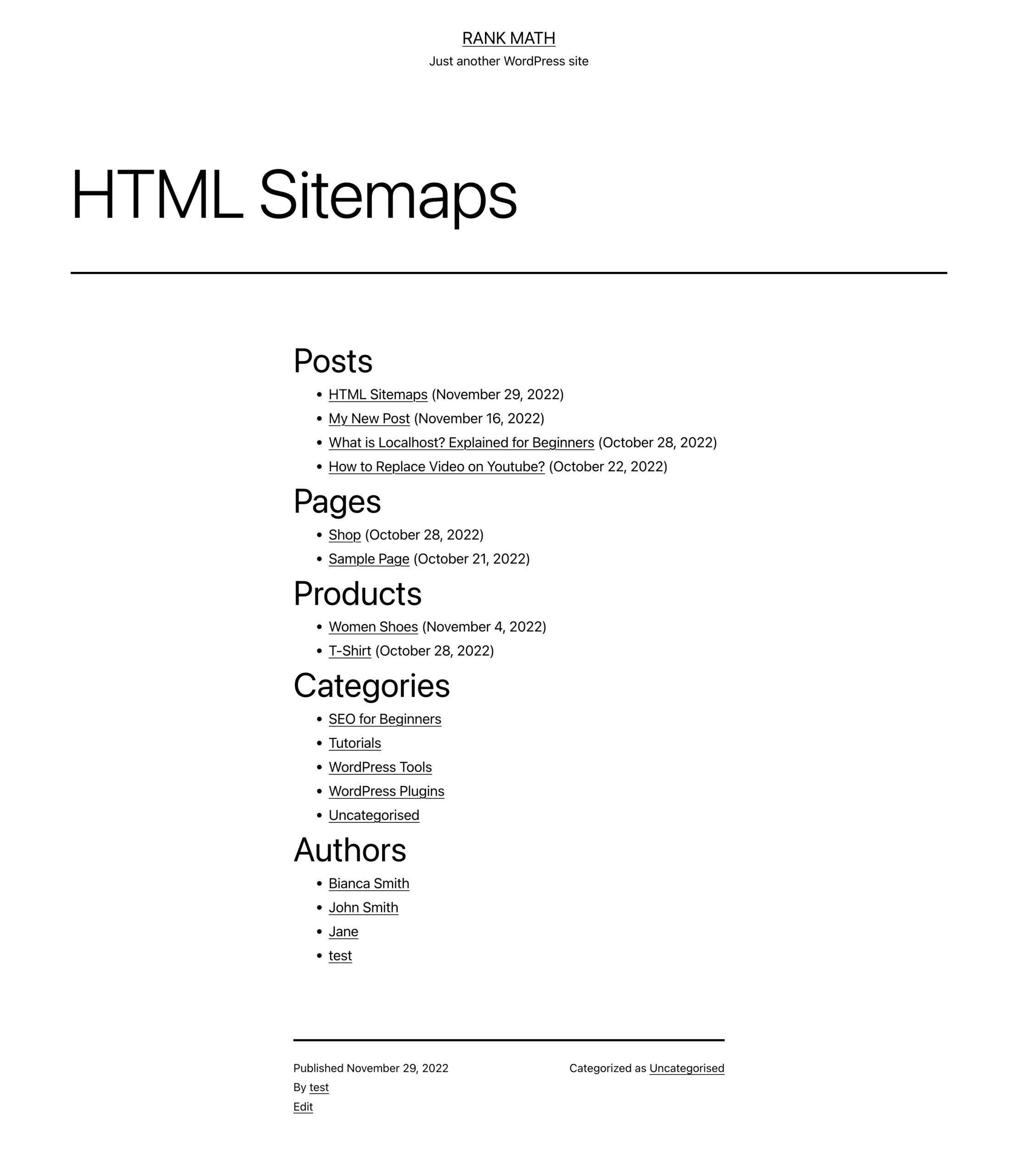
Best Practices for Creating an Effective HTML Sitemap
Creating an HTML sitemap is an essential step in enhancing user experience and improving site navigation. A well-structured sitemap helps visitors easily find the information they need while also boosting your website’s SEO. Here are some best practices to consider:
- Keep It Simple: Avoid overwhelming users with too much information. Focus on the most important pages of your site and categorize them logically.
- Use Clear Labels: Make sure each link in the sitemap has a clear and descriptive label. This aids both users and search engines in understanding the content of each page.
- Prioritize Pages: Highlight the most essential pages that you want your visitors to see. This can include contact information, services, or blog categories.
- Maintain an Updated Version: Regularly update your HTML sitemap to reflect any changes or additions to your website. This ensures that visitors are always directed to relevant content.
Another important aspect of an HTML sitemap is its accessibility. Make sure that it is easy to find and navigate to from your website. A prominent link in the footer or header can significantly enhance its visibility.
Consider using responsive design techniques to ensure your sitemap is mobile-friendly. More users access websites via mobile devices, so a sitemap that works seamlessly across different screen sizes can improve user experience.
| Element | Best Practice |
|---|---|
| Navigation | Link to key sections of your site prominently |
| Content | Limit to 100 links for better usability |
| Design | Ensure it fits the overall theme of your site |
Don’t forget to include internal links within your HTML sitemap. Internal linking can enhance the crawling and indexing of your website’s pages by search engines, further supporting your SEO efforts.
Lastly, test your HTML sitemap to ensure that all links are functioning correctly and that the layout is user-friendly. Gathering feedback from users can also help you identify areas for improvement.
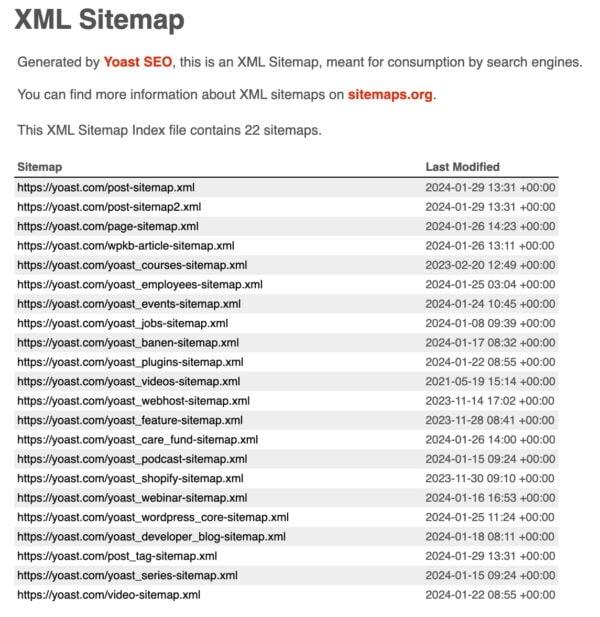
Tips for Crafting a Comprehensive XML Sitemap
Creating an XML sitemap is essential for SEO, helping search engines discover and index your website’s pages effectively. Here are some practical tips to ensure your sitemap is well-structured and comprehensive:
- Prioritize Important Pages: Include only the most important pages that you want search engines to index. This may include product pages, category pages, and key blog posts.
- Set a Clear Hierarchy: Organize your sitemap in a logical manner. Group similar pages together and maintain a clear structure to help search engines understand your site’s architecture.
- Use Correct Tags: Make sure to use the correct XML tags such as
- Regularly Update Your Sitemap: Whenever you add or remove pages, update your XML sitemap accordingly. This ensures search engines are always aware of the latest structure of your site.
Additionally, consider the following practices:
- Limit URL Count: An XML sitemap should ideally not exceed 50,000 URLs, and it should be no larger than 50MB when uncompressed. If your site has more URLs, create multiple sitemap files and use a sitemap index file.
- Include Alternate Versions: If your site has different versions (like mobile or international), include these in your sitemap to improve visibility across different platforms.
- Submit to Search Engines: After creation, submit your XML sitemap through tools like Google Search Console and Bing Webmaster Tools to help search engines crawl your site more efficiently.
Lastly, regularly audit your XML sitemap for broken links and outdated content. This can significantly enhance your site’s search engine performance and user experience.
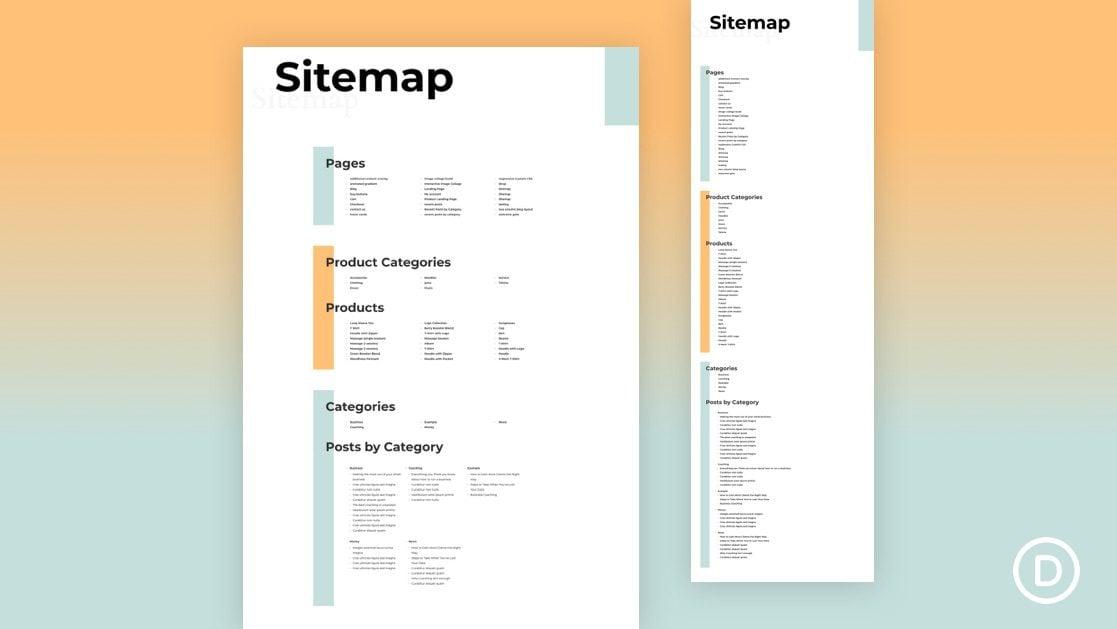
Which Sitemap is Better for Your Website Goals
When it comes to optimizing your website’s visibility and user experience, choosing the right type of sitemap is crucial. Each type has its unique benefits, and understanding your website’s specific goals will guide you toward the best choice.
HTML sitemaps are designed primarily for human users. They provide a clear, organized structure of your website, making it easy for visitors to navigate and find what they are looking for. If your goal is to enhance user experience, an HTML sitemap can serve as a valuable tool. It can:
- Improve site navigation
- Reduce bounce rates
- Increase the time users spend on your site
On the other hand, XML sitemaps are tailored for search engines. They serve as a roadmap of your website’s structure, allowing crawlers to understand the hierarchy of your content. If your main objective is to boost your website’s SEO performance, an XML sitemap is indispensable. Its advantages include:
- Facilitating faster indexing of new pages
- Providing information on page priority and update frequency
- Helping search engines discover pages that may not be easily accessible through internal links
For websites that aim to achieve both improved user experience and enhanced visibility, a combination of both sitemaps is often the best strategy. By leveraging the strengths of each format, you can ensure that your site is both user-friendly and search engine optimized. This dual approach allows you to cater to the needs of your audience while also meeting the technical requirements necessary for effective SEO.
It’s also worth noting that the nature of your website can influence your choice of sitemap. For example, e-commerce sites with numerous product pages may benefit significantly from an XML sitemap to keep search engines updated on inventory changes. Conversely, blogs and informational sites might find that an HTML sitemap enhances user engagement by allowing readers to explore related content easily.
| Sitemap Type | Best For | Key Features |
|---|---|---|
| HTML Sitemap | Users | Navigation, User Engagement, Reduced Bounce Rates |
| XML Sitemap | Search Engines | Indexing Speed, Page Priority, Discovery of Hidden Pages |
| Combination | Both Users and Search Engines | Enhanced Navigation, SEO Benefits |
Ultimately, the choice between HTML and XML sitemaps—or the decision to use both—depends on your website’s specific needs and objectives. By carefully assessing your goals and understanding the strengths of each sitemap type, you can create a strategy that maximizes your site’s potential to connect with users and rank well on search engines.
Combining HTML and XML Sitemaps: Is It Worth It?
When considering the integration of both HTML and XML sitemaps, it’s essential to recognize the distinct advantages each format brings to the table. While XML sitemaps are primarily designed for search engines, HTML sitemaps serve a different purpose—enhancing user navigation. Combining these two can create a comprehensive sitemap strategy that caters to both user experience and SEO.
Benefits of Combining Both Sitemaps:
- Improved User Experience: An HTML sitemap allows visitors to easily navigate your website, facilitating a better experience and potentially increasing engagement.
- Enhanced SEO Performance: With an XML sitemap, you guide search engines through your site structure, ensuring all your pages are indexed effectively.
- Cross-Promotion of Content: An HTML sitemap can highlight important content pieces, encouraging users to explore different sections of your site.
Furthermore, using both sitemaps can lead to increased visibility in search results. While search engines primarily use XML sitemaps for crawling, having an accessible HTML sitemap can enhance the site’s overall link structure, making some pages more discoverable. This can be particularly advantageous for larger websites where content can often become buried.
However, it’s crucial to implement these sitemaps correctly to reap the maximum benefits. For instance, the XML sitemap should be updated regularly to reflect new pages and changes, while the HTML sitemap should be designed to be user-friendly and intuitive. Consider the following:
| Feature | HTML Sitemap | XML Sitemap |
|---|---|---|
| Target Audience | Website Visitors | Search Engines |
| Format | Readable HTML | Machine-readable XML |
| Purpose | User Navigation | SEO Optimization |
| Update Frequency | As Needed | Dynamic |
Lastly, don’t overlook the potential for analytics. Tracking how users interact with your HTML sitemap can provide insights into what content resonates the most, allowing you to tailor your website’s navigation and content strategy accordingly. By analyzing data from both sitemaps, you can refine your approach, focusing on the areas that yield the best results.
the synergy created by combining HTML and XML sitemaps can significantly enhance both user experience and search engine optimization efforts. Investing the time and resources into both formats isn’t just a best practice; it’s a strategic move that could lead to better rankings and higher user satisfaction.

Common Mistakes to Avoid with Your Sitemaps
Creating a sitemap can be a straightforward task, but many website owners make mistakes that hinder their effectiveness. Here are some common pitfalls to watch out for:
- Neglecting to Update Your Sitemap: Just like your website content, your sitemap needs to be kept up-to-date. Failing to reflect new pages or changes can lead to broken links and missed indexing opportunities.
- Overstuffing with Unnecessary URLs: Including irrelevant pages, like those with low-value content or duplicate pages, can dilute the importance of your sitemap. Focus on the most crucial URLs that you want search engines to index.
- Ignoring the Sitemap Format: Whether you choose HTML or XML, ensure you’re using the right format for your audience. HTML sitemaps are user-friendly for visitors, while XML sitemaps cater to search engines.
- Not Including a Sitemap Index: If your site has a large number of pages, a single sitemap might not be enough. Using a sitemap index file that links to multiple sitemaps can help organize your content better.
Moreover, some technical aspects often get overlooked, which can have significant implications for SEO:
- Incorrectly Specifying URLs: Always ensure that your URLs are correct and lead to active pages. A simple typo can render a whole section of your site invisible to search engines.
- Missing Important Metadata: When creating an XML sitemap, ensure you include essential metadata like lastmod, changefreq, and priority. This information helps search engines crawl your site more intelligently.
Lastly, don’t forget about the submission process:
| Action | Tip |
|---|---|
| Submit to Search Engines | Make sure to submit your sitemap to Google Search Console and Bing Webmaster Tools. |
| Check for Errors | Regularly monitor for crawl errors through your webmaster tools to ensure all pages are indexed properly. |
By avoiding these common mistakes, you can significantly enhance the performance and utility of your sitemaps. Ultimately, a well-structured and maintained sitemap can lead to better visibility and traffic for your website.

Conclusion: Choosing the Right Sitemap for Your Needs
When it comes to optimizing your website’s visibility, the choice between an HTML or XML sitemap can significantly impact your SEO strategy. Understanding the nuances of each type can help you make an informed decision that aligns with your specific needs.
HTML sitemaps serve as a user-friendly guide for visitors, enhancing the user experience on your website. They facilitate easy navigation by presenting an organized list of links to various pages. This is particularly beneficial for:
- Small to medium-sized websites: If your site has a limited number of pages, an HTML sitemap can provide a straightforward way for users to find what they need.
- Content-rich sites: For blogs or portfolios, an HTML sitemap can showcase your work, encouraging visitors to explore more.
- SEO purposes: Since search engines use HTML sitemaps to discover links, they can indirectly support your overall SEO efforts.
On the other hand, XML sitemaps are tailor-made for search engines. They offer a structured format that allows search engines to efficiently crawl and index your site. Here’s when an XML sitemap might be the right choice:
- Large websites: If your website features hundreds or thousands of pages, an XML sitemap helps ensure all your content gets indexed.
- Dynamic websites: For sites where content changes frequently, an XML sitemap can be updated automatically, keeping search engines informed about new pages.
- Priority and frequency settings: XML sitemaps allow you to specify the priority of pages and how often they change, giving you more control over your SEO strategy.
For many businesses, using both types of sitemaps can be advantageous. You can enhance user experience with an HTML sitemap while ensuring that search engines effectively crawl your site with an XML sitemap. This dual approach can maximize your visibility and accessibility.
consider the following factors when choosing your sitemap:
| Factor | HTML Sitemap | XML Sitemap |
|---|---|---|
| User Experience | ✔️ Enhances navigation | ✖️ Primarily for search engines |
| SEO Benefits | ✔️ Supports SEO indirectly | ✔️ Directly improves indexing |
| Best Use Case | Small to medium sites | Large and dynamic sites |
Ultimately, the right choice hinges on your website’s specific characteristics and goals. Evaluate your needs carefully to select the sitemap that will best serve your audience and enhance your site’s performance in search engine rankings.
Frequently Asked Questions (FAQ)
Q: What’s the main difference between an HTML sitemap and an XML sitemap?
A: Great question! An HTML sitemap is designed for human visitors. It’s a user-friendly page that lists all the pages on your website, making it easier for users to navigate. On the other hand, an XML sitemap is primarily for search engines. It’s a structured file that helps search engines like Google understand your website’s structure and index it more efficiently. Both serve their purposes, but the audience is different!
Q: Why should I consider using an HTML sitemap?
A: If you want to enhance user experience, an HTML sitemap is a fantastic addition. It provides visitors with a clear overview of your site’s content. This can reduce bounce rates because users can quickly find what they’re looking for. Plus, it sends a positive signal to search engines about your site’s organization, which can improve your SEO!
Q: What about an XML sitemap? Why is it important?
A: An XML sitemap is crucial for SEO! It helps search engines discover your website’s pages, especially if you have a large site with lots of content or if your pages are not easily accessible via links. By submitting an XML sitemap to search engines, you ensure that they crawl and index your pages efficiently, which can lead to better visibility in search results. If you’re serious about your site’s performance, an XML sitemap is a must-have!
Q: Can I use both an HTML and an XML sitemap?
A: Absolutely! In fact, using both is highly recommended. An HTML sitemap improves user experience, while an XML sitemap boosts your SEO efforts. They complement each other beautifully, ensuring that both your visitors and search engines can navigate your site effectively. It’s a win-win!
Q: How often should I update my XML sitemap?
A: Ideally, you should update your XML sitemap whenever you add or remove pages from your site. If you publish new content frequently, consider updating it regularly—at least once a month. Some websites even automate this process, which can save you a lot of time! Keeping your sitemap fresh helps search engines stay updated on your content.
Q: Is it difficult to create an XML sitemap?
A: Not at all! There are plenty of tools and plugins available that can generate an XML sitemap for you in just a few clicks. If you’re using a content management system like WordPress, there are plugins specifically designed for this purpose. Just set it up, and you’re good to go!
Q: If I have to choose one, which should I prioritize?
A: That’s a tough choice! However, if you want to focus solely on improving search engine visibility, go for the XML sitemap. But remember, an HTML sitemap is incredibly beneficial for enhancing user experience. So, if your site allows it, using both would be the best approach for overall performance!
Q: Can I track the effectiveness of my sitemaps?
A: Yes, you can! Tools like Google Search Console allow you to submit your XML sitemap and track how well it’s performing. You can see how many pages have been indexed and if there are any issues. For your HTML sitemap, while direct tracking might be trickier, you can analyze user behavior through analytics tools to see how often it’s used.
Q: which sitemap should I use?
A: Ideally, both! An HTML sitemap enhances user navigation, while an XML sitemap boosts your SEO efforts. By utilizing both, you create a more accessible and search-engine-friendly website. So, if you want to make your site shine for both visitors and search engines, go for the double whammy!
Wrapping Up
As we wrap up our exploration of HTML and XML sitemaps, it’s clear that both have their unique strengths and purposes. If you want to enhance user experience and improve navigation on your site, an HTML sitemap is your go-to choice. It’s all about making it easier for your visitors to find what they need.
On the other hand, if you’re keen on optimizing your site for search engines and ensuring that your content gets indexed efficiently, then an XML sitemap is essential. It’s a powerful tool in the SEO toolkit that can help search engines understand your site structure and prioritize your pages.
Ultimately, the choice between HTML and XML sitemaps doesn’t have to be an either-or scenario. Many savvy webmasters find success by using both, leveraging the strengths of each to create a seamless experience for users and search engines alike.
So, take a moment to assess your needs—what do you want to achieve with your sitemap? Whether you opt for one or both, remember that a well-structured site is crucial for both user engagement and search visibility. Happy optimizing, and may your website soar to new heights!






